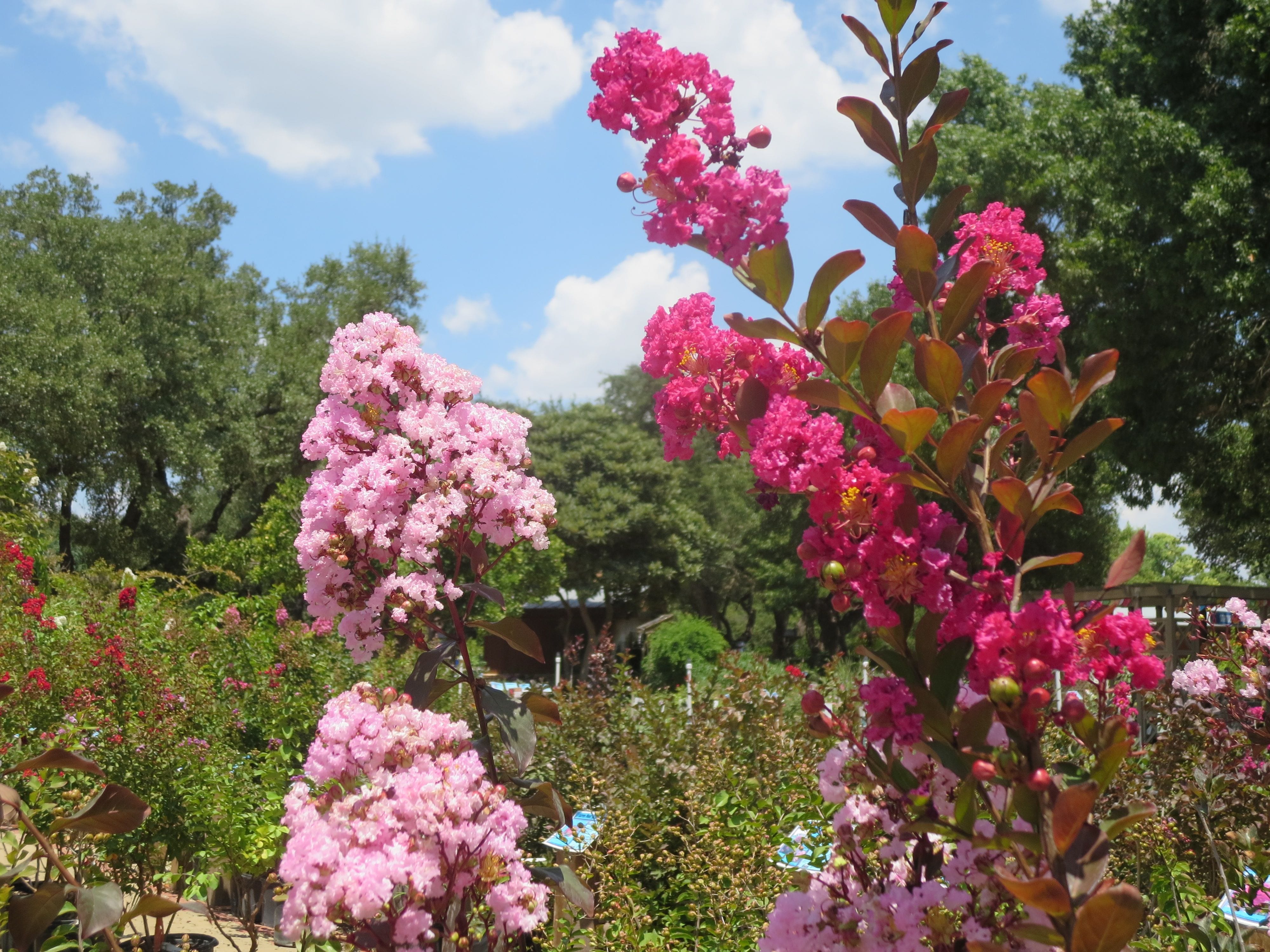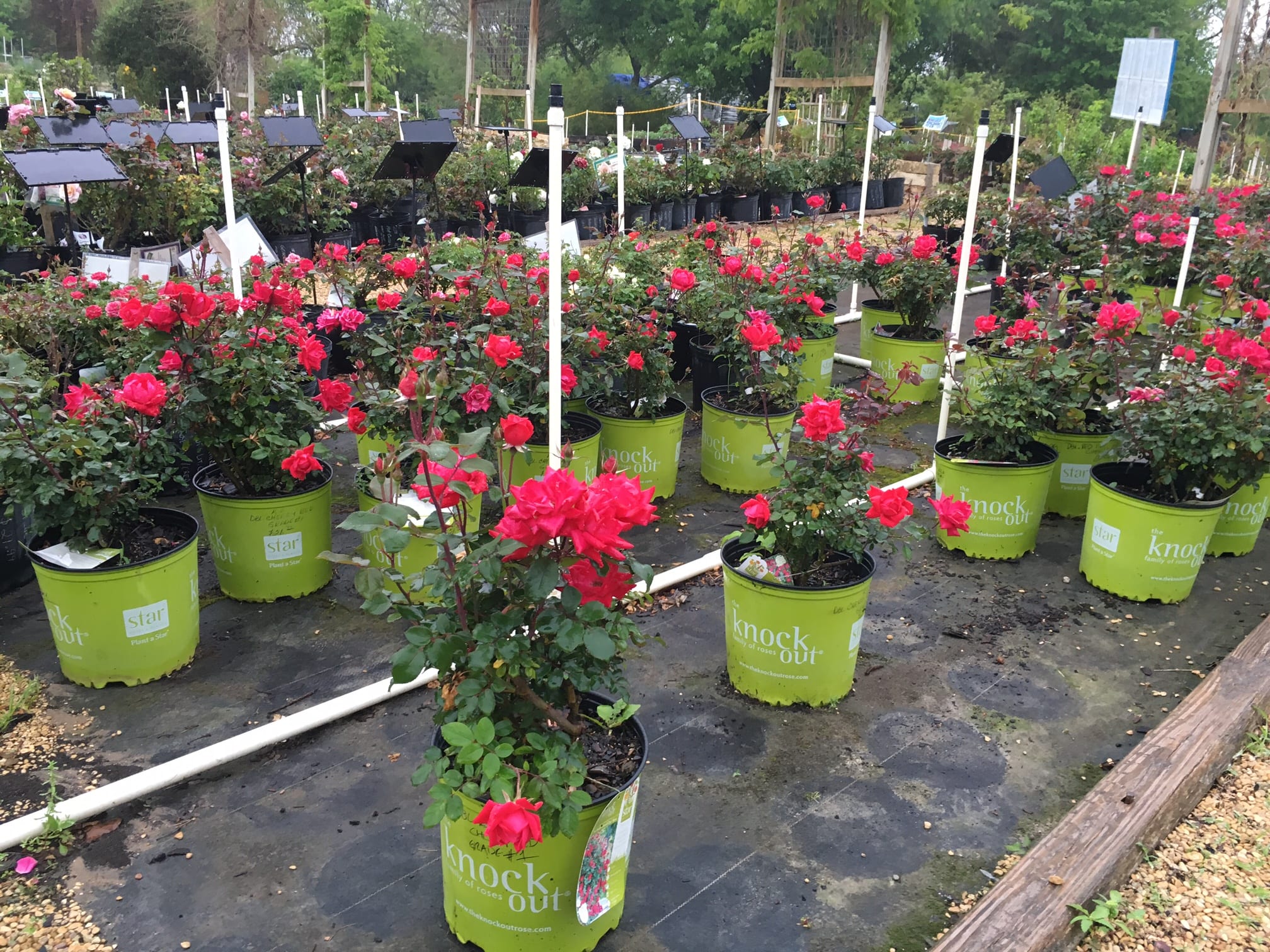Normally in Texas we welcome the rain with open arms; but when cloudy, rainy weather is prolonged and brings with it the increased possibility of powdery mildew and other garden issues, most of us say, “Rain, rain, go away!” Today’s blog gives you info on one of the most common fungal issues we face with rainy/cloudy, weather: powdery mildew.
Powdery Mildew: What Is It?
Powdery Mildew: Powdery Mildew is a fungus that can develop on many types of plants when conditions like warm days, cool nights, high humidity, and shady/cloudy conditions are present. This fungus is most prevalent in spring but can arrive in fall as well. Powdery Mildew presents as white/gray spots on leaves and new shoots, and may cause puckering and deformed new growth. While powdery mildew is unattractive, it rarely causes serious damage to the overall plant.
- Plants Commonly Affected by Powdery Mildew: Roses, crape myrtles, euonymus, photinia, honeysuckle, Turk’s cap, privet, rock rose, squash, peas. Though these are the plants most commonly affected other plants can definitely grab the fungus as well, especially when favorable conditions are present.
How To Prevent/Treat Powdery Mildew
- Choose mildew resistant varieties. Rainbow Gardens carries many mildew resistant plant varieties. Our selection of Crape Myrtles are ALL mildew resistant! Earth Kind® roses and Knock Out® roses are varieties of roses we also carry at the nursery that are mildew resistant. Check out our blue signs in the nursery which includes information on disease and pest resistance for plants carried at Rainbow Gardens.
- Preventative fungicides can be effective before powdery mildew appears. Many gardeners who have some of the more powdery mildew-susceptible plants listed above opt to spray preventively to avoid the fungus. Rainbow Gardens carries both organic and synthetic options for fungus control and prevention, and our staff will be happy to show you the correct product. **Keep in mind that once powdery mildew presents itself, spraying is less effective except for preventing it from spreading to continuing new growth.
- Avoid overhead watering. There is nothing you can do about rainfall coming down on top of foliage, but when you need to water your plants manually, try to avoid getting the foliage wet. Concentrate on getting the water to the roots of your plant where it needs it most. Wet foliage, especially during cloudy periods, when the foliage will take longer to dry, increases the likelihood of powdery mildew developing.
- Increase air circulation throughout your plants. Poor air circulation also contributes to development of fungal issues like powdery mildew, so space plants according to the instructions on their labels. No crowding!
- Make plans to move plants to sunnier areas if needed. If you notice your roses (or other susceptible plants) continually developing powdery mildew, they may not be getting enough sun. Wait until it’s the appropriate time to dig and transplant (December/January) and get those roses to an area that receives no less than 6-8 hours of FULL sun. There is no shade-loving rose!

We ONLY carry powdery mildew resistant crape myrtle varieties at Rainbow Gardens!

Knock Out® Roses are bred to be resistant to fungal disease like powdery mildew.
~ The Happy Gardener


I am giving up! The beach is a crappy place to try and grow anything.
Oh no! Maybe you can look around your beach town and see if you have some local nurseries that can advise you on the best plants and techniques for growing them in that environment. If not, enjoy the beach and ocean waves!